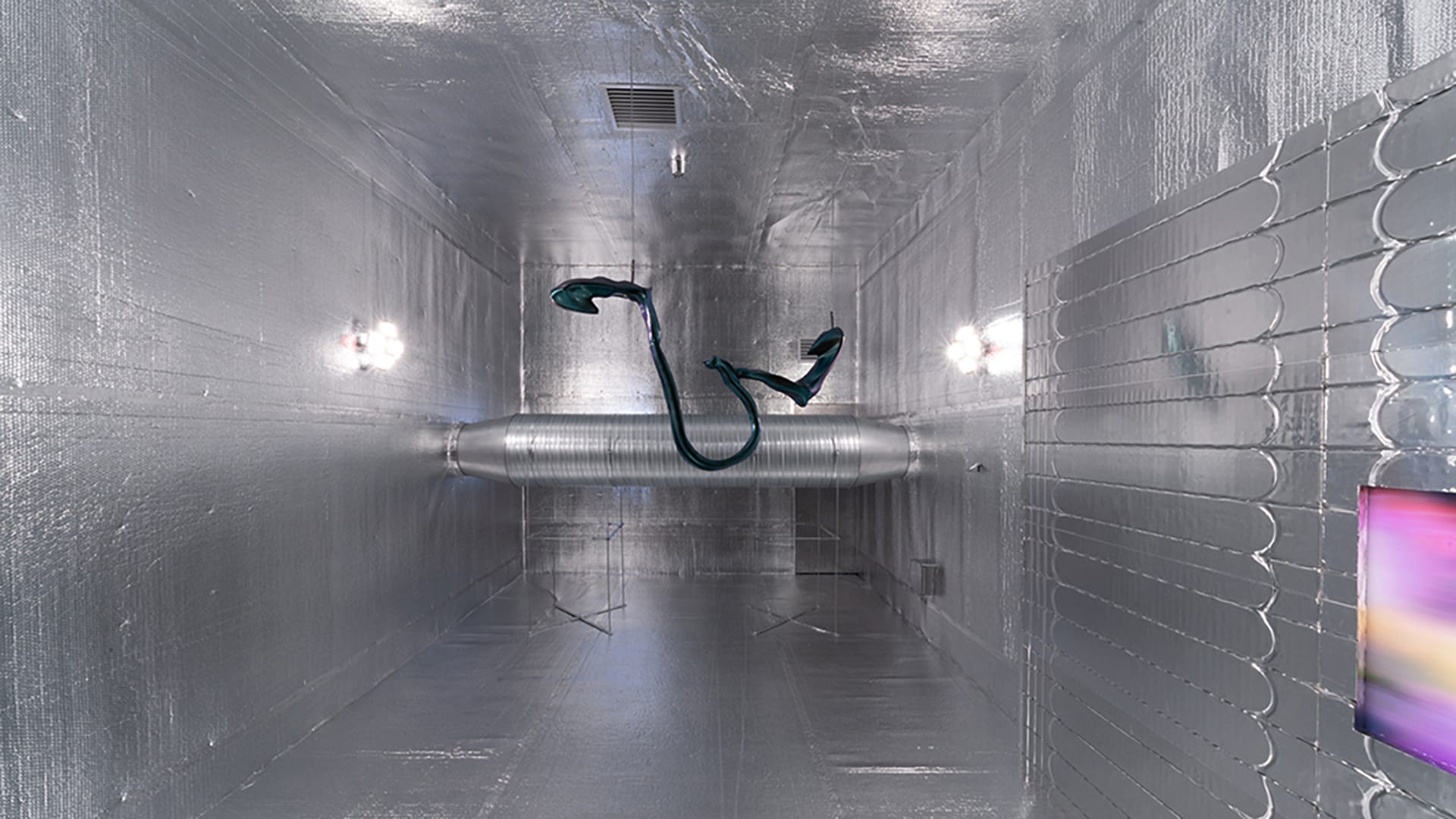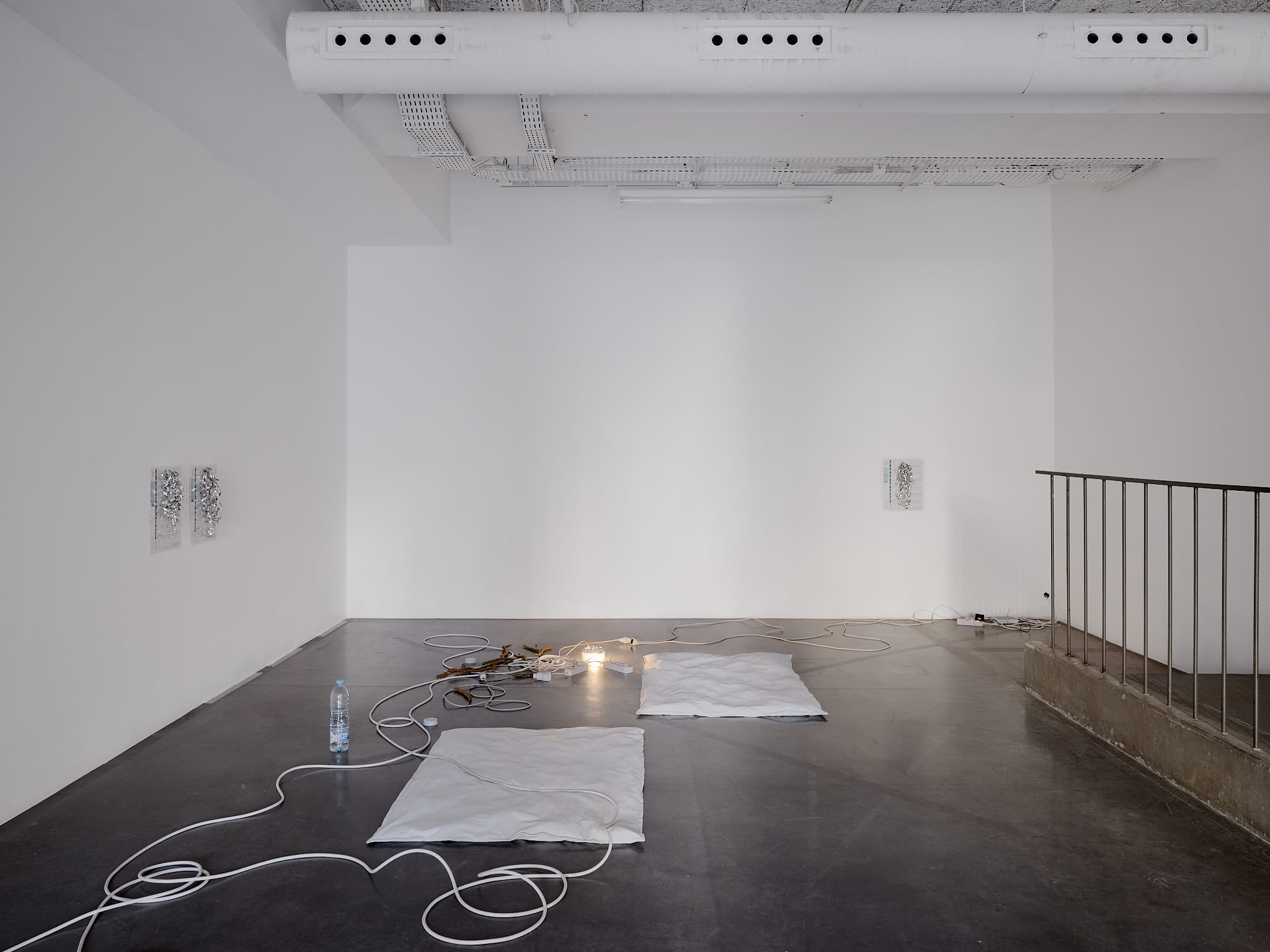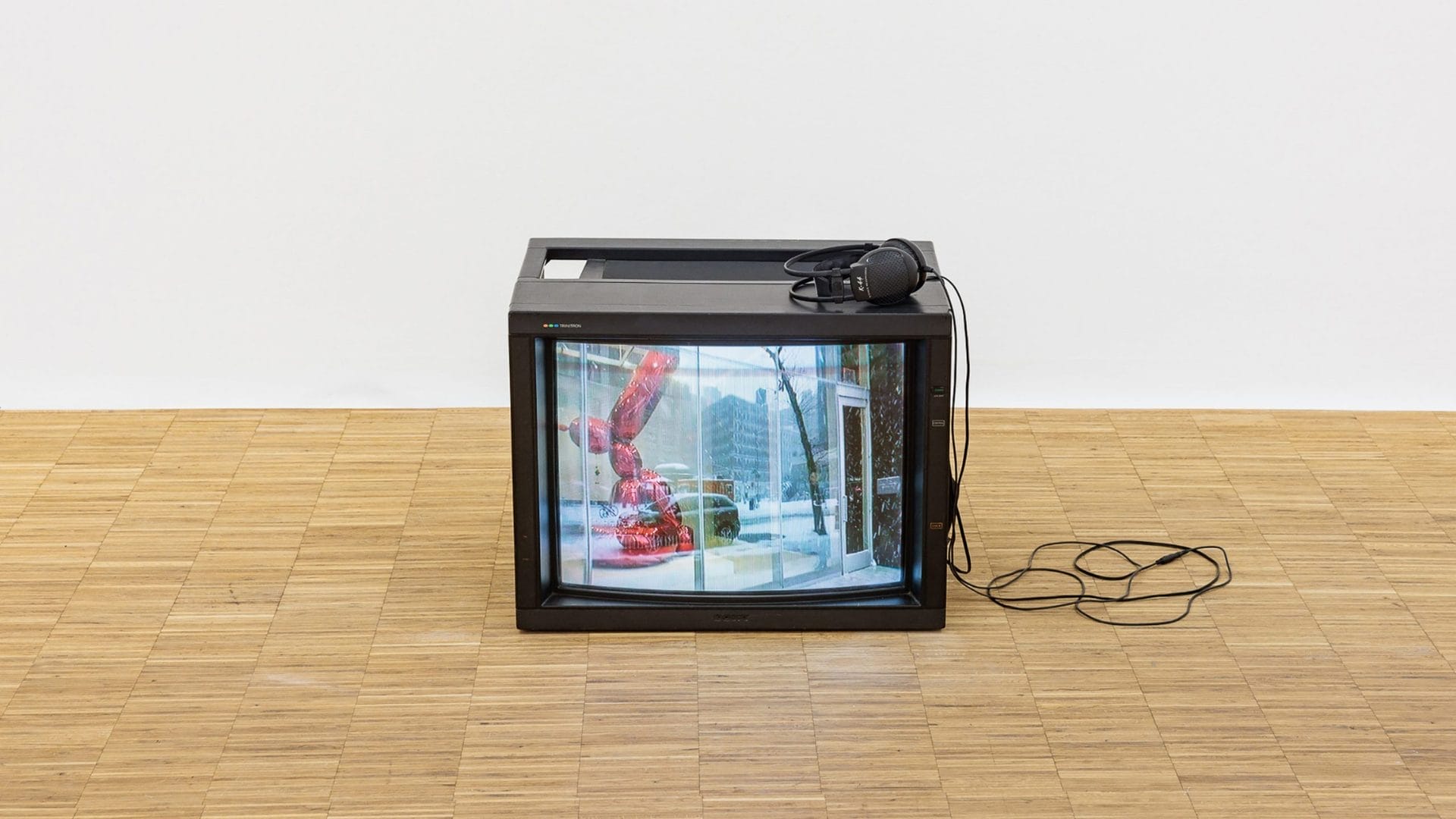
The Weight of a Broken Promise: Navigating the Absence of Debt
“Debt is a distorted promise, an idea that begins with the intention to create balance but ends up generating tension, control, even guilt.” This thought came to mind while examining the images of this exhibition, a space that feels suspended in time, empty, yet heavy. It’s intriguing, isn’t it? We often think of debt in quantitative terms: numbers, balance sheets, interest rates. But here, debt takes on a different form, one that is far more visceral and tangible. It speaks through bodies, objects, and spaces, through everything that gets caught in the margins of an unfulfilled promise, in the voids left behind by compromise or, perhaps, failure.
The exhibition layout amplifies this impression. The space seems designed to highlight absence, transforming each work into an isolated island that demands attention. There’s no easy narrative tying the pieces together, no visual shortcuts to understanding. Every object, every element feels deliberate, forcing you to pause, to grapple with its presence and its meaning. It’s as if you’re piecing together a fragmented story, one where the gaps are as significant as what’s shown. This sense of incompletion isn’t frustrating, it’s evocative, inviting you to lean in and confront the unsaid.
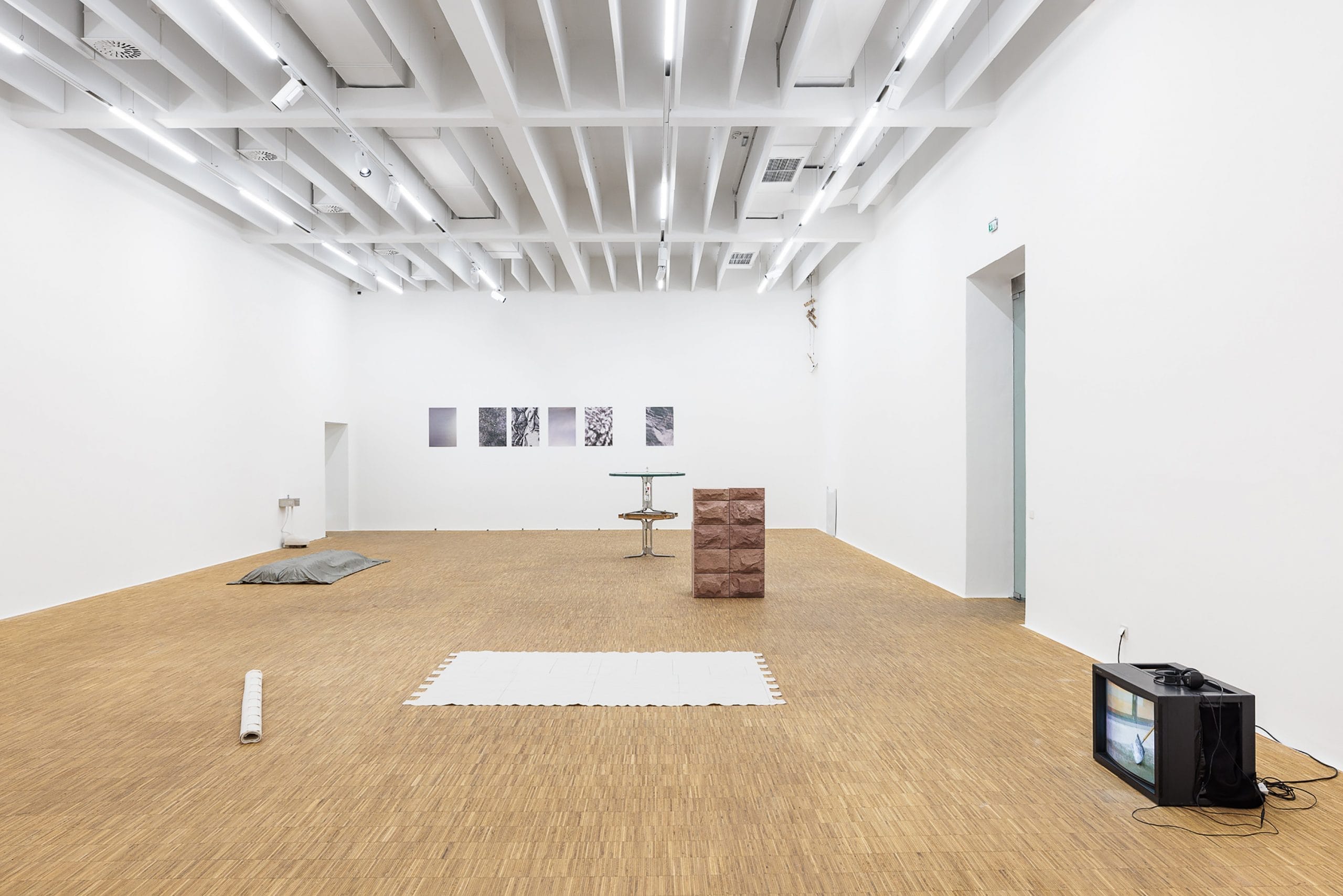
At the heart of it all is a sculpture that initially appears as a table, but calling it that feels reductive. It’s an uncanny hybrid: part industrial design, part sculpture, part utilitarian relic. A thin, polished glass surface rests on a robust metal frame, both cold and clinical in its execution. But there’s something unsettling about its precariousness. At the center of the table sits a small, empty glass, a detail so ordinary, yet so unnervingly purposeful. The tension between the structure’s seeming stability and the fragility of that single glass feels almost palpable. It’s impossible not to read it as a metaphor: the unstable equilibrium of our lives, the constant tension between the promises made to us and their inability to ever be fully realized.
Nearby, a navy-blue suitcase seems to stand apart in its ordinariness, almost as though it has wandered in from elsewhere. Yet, as you consider it, the weight of its symbolism becomes clear. The suitcase, pristine and rigid, speaks of mobility, of the freedom, or burden, of movement. Its glossy surface and dangling luggage tags evoke a sense of transit, of destinations dictated not by choice but by necessity. It becomes an emblem of our relationship with debt: the relentless push toward motion, progress, and productivity, even when the cost, financial, emotional, existential, is insurmountable.
The exhibition space itself is stark, yet deeply intentional. The objects are deliberately spaced apart, creating a sense of isolation and silence between them. It’s not the kind of silence that soothes, it’s the kind that hangs heavy, forcing you to sit with the discomfort of what’s left unsaid. Across one wall, five blurry photographs hang in a careful line. Their indistinct forms resist clarity, almost daring you to search for meaning. They feel like fragments of an incomprehensible document, echoes of contracts or agreements rendered illegible with time. It’s a striking visual metaphor for debt itself, intangible yet omnipresent, elusive yet unavoidable.
There’s a moment of unexpected levity in the form of a television placed directly on the floor, a video looping endlessly on its screen. It feels like a self-aware nod to the absurdity of our consumption habits, of our constant immersion in screens and systems we barely understand. The television is both a critique and a bit of dark humor, reminding us that debt isn’t just an economic mechanism, it’s a cultural construct, one we reinforce with our choices and distractions.
But perhaps the most affecting piece in the exhibition is a simple gray cushion lying on the floor. It almost fades into the background at first glance, but its presence is quietly profound. The cushion speaks of exhaustion, of the toll debt takes not just on systems but on people. It’s a rare soft object in a room dominated by hard edges and cold materials, making its vulnerability even more striking. It feels like a surrender, a space where the weight of expectations, financial, societal, or personal, becomes too much to bear. The cushion is less an object and more an invitation to acknowledge our collective fatigue.
As a whole, the exhibition doesn’t provide answers, it’s not interested in resolution. Instead, it asks questions, uncomfortable, unavoidable ones. What does it mean to be in debt, not just to a bank or a lender but to society, to history, to ourselves? How much of what we owe is chosen, and how much is imposed? And what happens when the promises that underpin our lives are revealed to be as fragile as that glass resting on the table?
What’s remarkable about this exhibition is its ability to make the intangible tangible. Through ordinary objects, tables, suitcases, photographs, a cushion, it creates a dialogue that is both deeply personal and universally resonant. The minimalism of the layout isn’t an aesthetic choice, it’s a conceptual one. The emptiness between the works is itself a statement, a representation of the distance between what we’re promised and what we receive, between the systems that bind us and the humanity that struggles within them.
Examining these images, you can’t help but feel a growing unease. It’s the kind of discomfort that lingers, that forces reflection. Debt here is not just a financial concept but an emotional state, a condition of existence in a world where everything is quantified, measured, and owed. It’s a burden we carry, often without realizing it, until something, like this exhibition, forces us to confront it.
In the end, this is not just an exhibition about debt, it’s an exhibition about connection. About the ways in which we are bound to one another through what we owe, through the promises we make and break. It’s a space that doesn’t simply demand attention, it demands introspection. And that, perhaps, is its greatest achievement: it doesn’t just show you the distortions of a promise, it asks you to reckon with your place in them.

At the heart of it all is a sculpture that initially appears as a table, but calling it that feels reductive. It’s an uncanny hybrid: part industrial design, part sculpture, part utilitarian relic. A thin, polished glass surface rests on a robust metal frame, both cold and clinical in its execution. But there’s something unsettling about its precariousness. At the center of the table sits a small, empty glass, a detail so ordinary, yet so unnervingly purposeful. The tension between the structure’s seeming stability and the fragility of that single glass feels almost palpable. It’s impossible not to read it as a metaphor: the unstable equilibrium of our lives, the constant tension between the promises made to us and their inability to ever be fully realized.
Nearby, a navy-blue suitcase seems to stand apart in its ordinariness, almost as though it has wandered in from elsewhere. Yet, as you consider it, the weight of its symbolism becomes clear. The suitcase, pristine and rigid, speaks of mobility, of the freedom, or burden, of movement. Its glossy surface and dangling luggage tags evoke a sense of transit, of destinations dictated not by choice but by necessity. It becomes an emblem of our relationship with debt: the relentless push toward motion, progress, and productivity, even when the cost, financial, emotional, existential, is insurmountable.
The exhibition space itself is stark, yet deeply intentional. The objects are deliberately spaced apart, creating a sense of isolation and silence between them. It’s not the kind of silence that soothes, it’s the kind that hangs heavy, forcing you to sit with the discomfort of what’s left unsaid. Across one wall, five blurry photographs hang in a careful line. Their indistinct forms resist clarity, almost daring you to search for meaning. They feel like fragments of an incomprehensible document, echoes of contracts or agreements rendered illegible with time. It’s a striking visual metaphor for debt itself, intangible yet omnipresent, elusive yet unavoidable.

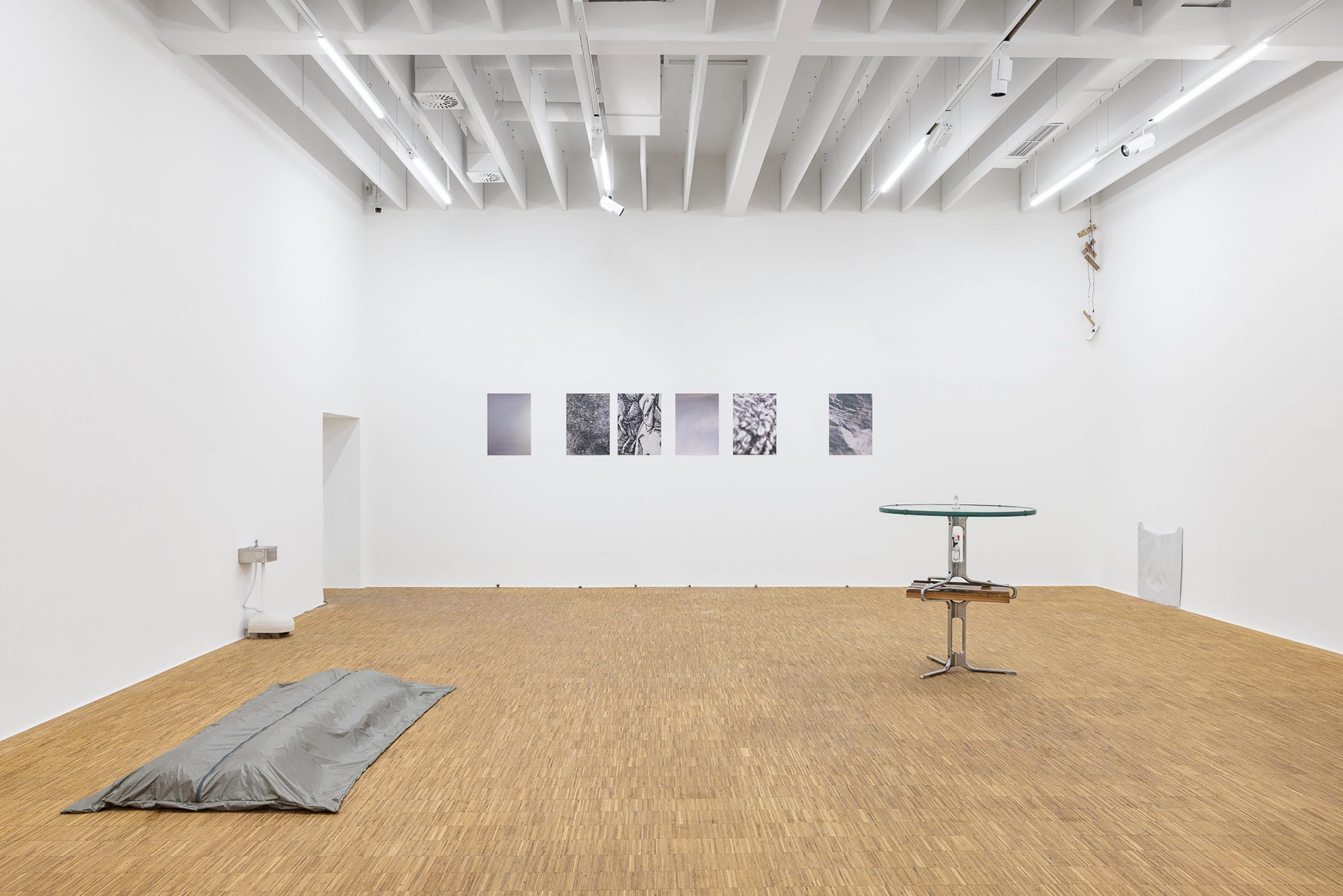
There’s a moment of unexpected levity in the form of a television placed directly on the floor, a video looping endlessly on its screen. It feels like a self-aware nod to the absurdity of our consumption habits, of our constant immersion in screens and systems we barely understand. The television is both a critique and a bit of dark humor, reminding us that debt isn’t just an economic mechanism, it’s a cultural construct, one we reinforce with our choices and distractions.
But perhaps the most affecting piece in the exhibition is a simple gray cushion lying on the floor. It almost fades into the background at first glance, but its presence is quietly profound. The cushion speaks of exhaustion, of the toll debt takes not just on systems but on people. It’s a rare soft object in a room dominated by hard edges and cold materials, making its vulnerability even more striking. It feels like a surrender, a space where the weight of expectations, financial, societal, or personal—becomes too much to bear. The cushion is less an object and more an invitation to acknowledge our collective fatigue.
As a whole, the exhibition doesn’t provide answers, it’s not interested in resolution. Instead, it asks questions, uncomfortable, unavoidable ones. What does it mean to be in debt, not just to a bank or a lender but to society, to history, to ourselves? How much of what we owe is chosen, and how much is imposed? And what happens when the promises that underpin our lives are revealed to be as fragile as that glass resting on the table?
What’s remarkable about this exhibition is its ability to make the intangible tangible. Through ordinary objects, tables, suitcases, photographs, a cushion, it creates a dialogue that is both deeply personal and universally resonant. The minimalism of the layout isn’t an aesthetic choice, it’s a conceptual one. The emptiness between the works is itself a statement, a representation of the distance between what we’re promised and what we receive, between the systems that bind us and the humanity that struggles within them.
Examining these images, you can’t help but feel a growing unease. It’s the kind of discomfort that lingers, that forces reflection. Debt here is not just a financial concept but an emotional state, a condition of existence in a world where everything is quantified, measured, and owed. It’s a burden we carry, often without realizing it, until something, like this exhibition, forces us to confront it.
In the end, this is not just an exhibition about debt, it’s an exhibition about connection. About the ways in which we are bound to one another through what we owe, through the promises we make and break. It’s a space that doesn’t simply demand attention, it demands introspection. And that, perhaps, is its greatest achievement: it doesn’t just show you the distortions of a promise, it asks you to reckon with your place in them.
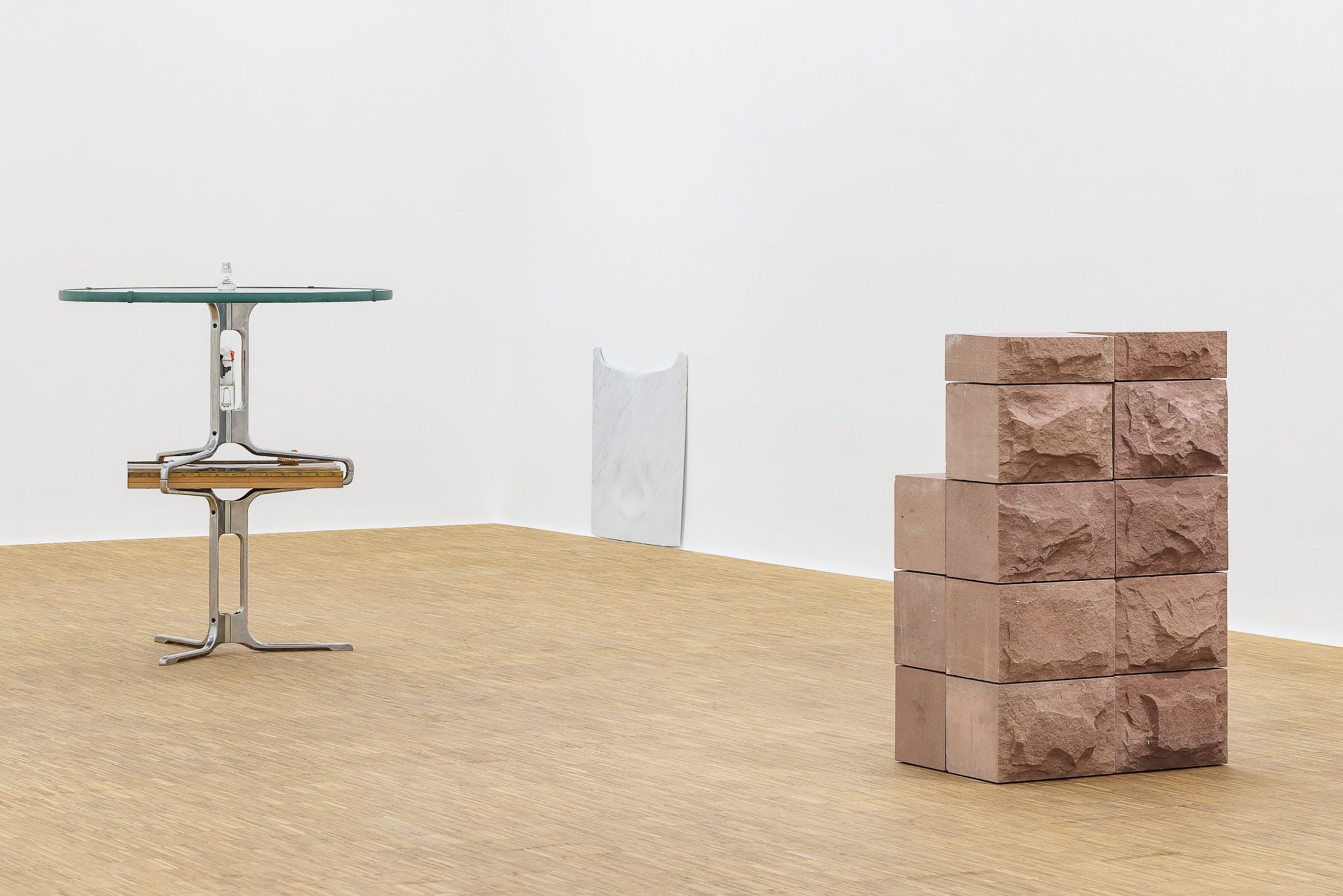
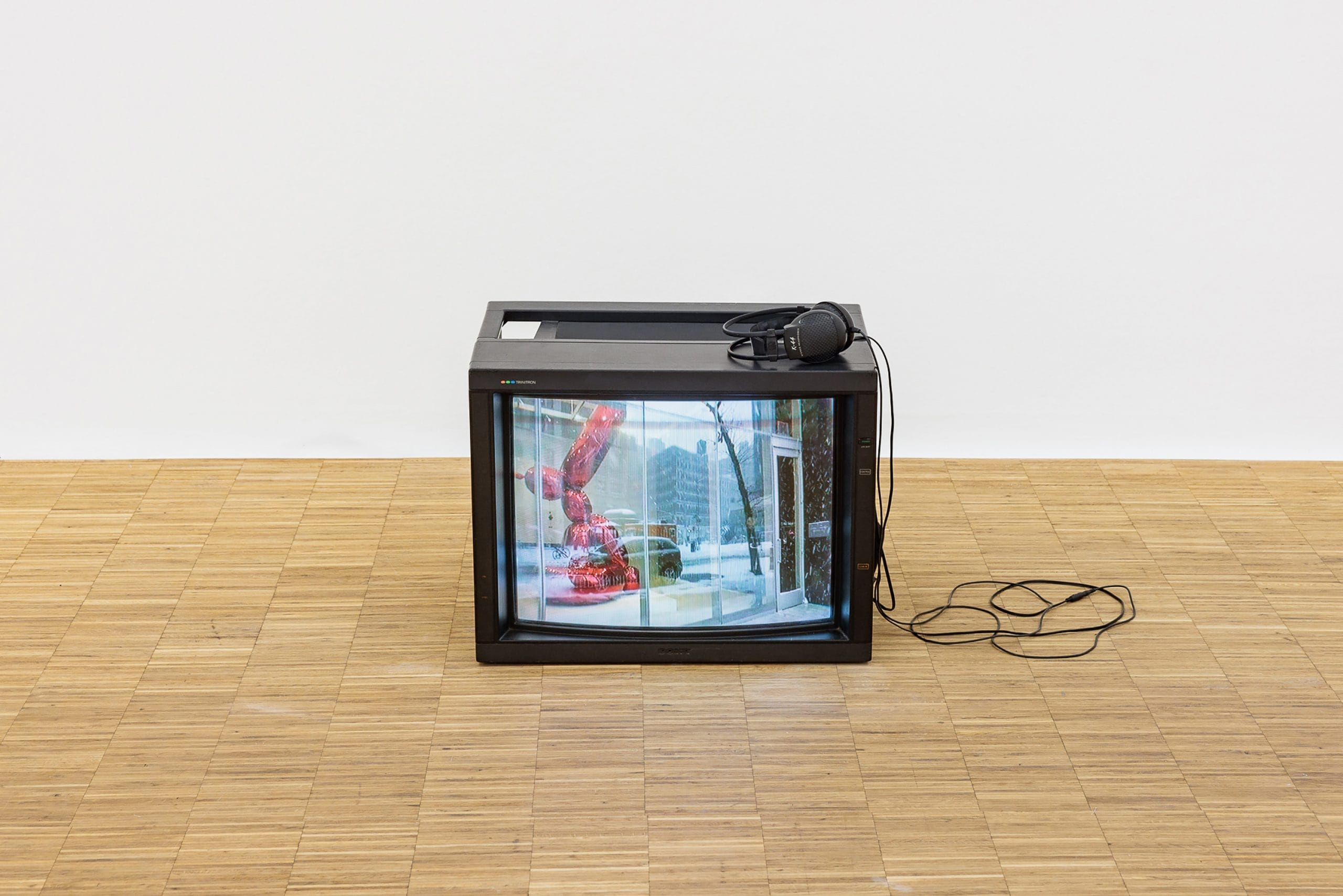
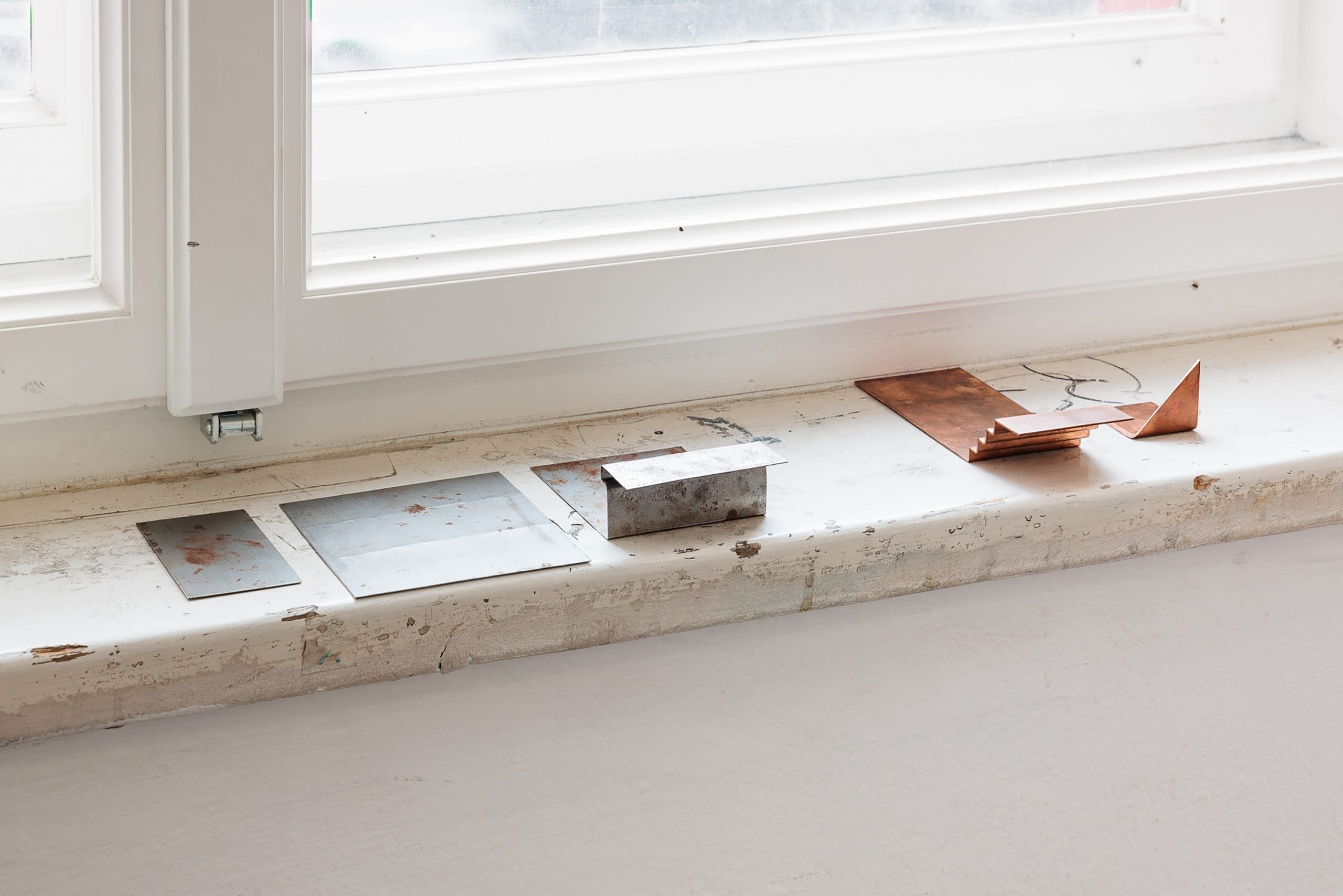
fakewhale
Founded in 2021, Fakewhale advocates the digital art market's evolution. Viewing NFT technology as a container for art, and leveraging the expansive scope of digital culture, Fakewhale strives to shape a new ecosystem in which art and technology become the starting point, rather than the final destination.
You may also like
The Confluence of Choreography and the Architecture of Movement: The Transformation of Ballet by William Forsythe
William Forsythe is not a figure confined by established boundaries; rather, he continuously redefin
Beatrice Vorster, Szilvia Bolla, Sabrina Ratté, Evangelia Dimitrakopoulou, Amélie Mckee, and Melle Nieling, “LOG 3: Interceptor,” at Plicnik Space Initiative, London.
“LOG 3: Interceptor” by Beatrice Vorster, Szilvia Bolla, Sabrina Ratté, Evangelia Dimit
Longlife, Andréa Spartà
Longlife, Andréa Spartà, curated by Maëlle Dault, Frac Île de France Andréa Spartà’s dis


